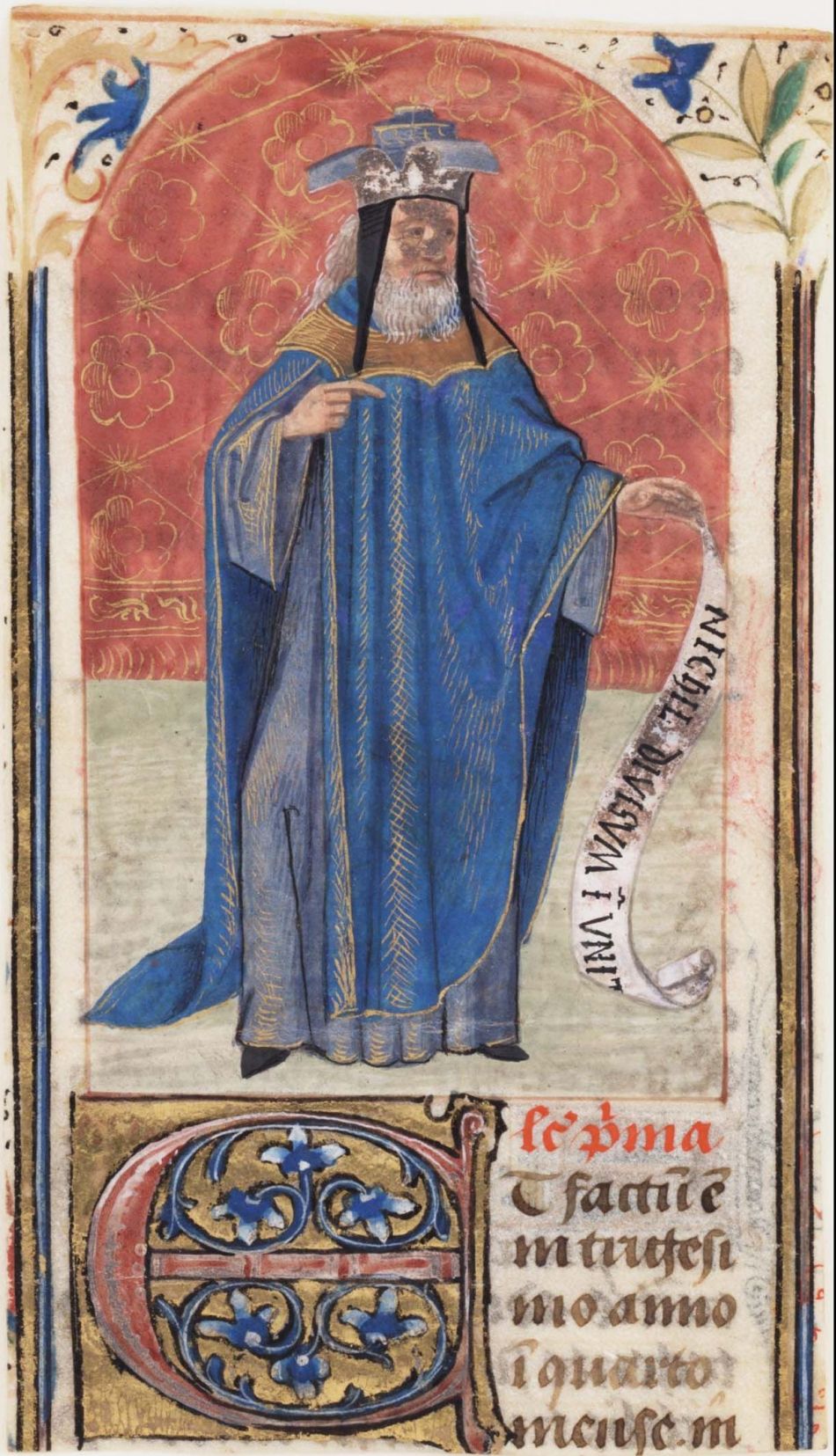|
DAWN
Daily Arts Web Nucleus
Discover the Arts! Each day a different image from the Literary, Performing, or Visual Arts representing a portion of Scripture plus an explanation with links and a discussion forum 2013 February 3
Artist Unknown Late Medieval and Renaissance Style Free Library of Philadelphia, Philadelphia, Pennsylvania, USA Image Credit: Digital Scriptorium
The Book of Ezekiel Summary From Easton's Bible Commentary: Consists mainly of three groups of prophecies. After an account of his call to the prophetical office (Ezek. 1 - 3:21), Ezekiel (1.) utters words of denunciation against the Jews (Eze 3:22-24), warning them of the certain destruction of Jerusalem, in opposition to the words of the false prophets (Eze 4:1-3). The symbolical acts, by which the extremities to which Jerusalem would be reduced are described in Ezek. 4 - 5, show his intimate acquaintance with the Levitical legislation. (See Exo 22:30; Deu 14:21; Lev 5:2; Lev 7:18, Lev 7:24; Lev 17:15; Lev 19:7; Lev 22:8, etc.) (2.) Prophecies against various surrounding nations: against the Ammonites (Eze 25:1-7), the Moabites (Eze 25:8-11), the Edomites (Eze 25:12-14), the Philistines (Eze 25:15-17), Tyre and Sidon (Ezek. 26 - 28), and against Egypt (Ezek. 29 - 32). (3.) Prophecies delivered after the destruction of Jerusalem by Nebuchadnezzar: the triumphs of Israel and of the kingdom of God on earth (Ezek. 33 - 39); Messianic times, and the establishment and prosperity of the kingdom of God (Ezek. 40; Ezek. 48). The closing visions of this book are referred to in the book of Revelation (Ezek. 38 = Rev 20:8; Eze 47:1-8 = Rev 22:1, Rev 22:2). Other references to this book are also found in the New Testament. (Compare Rom 2:24 with Eze 36:2; Rom 10:5, Gal 3:12 with Eze 20:11; 2 Pe 3:4 with Eze 12:22.) It may be noted that Daniel, fourteen years after his deportation from Jerusalem, is mentioned by Ezekiel (Eze 14:14) along with Noah and Job as distinguished for his righteousness, and some five years later he is spoken of as pre-eminent for his wisdom (Eze 28:3). Ezekiel's prophecies are characterized by symbolical and allegorical representations, "unfolding a rich series of majestic visions and of colossal symbols." There are a great many also of "symbolical actions embodying vivid conceptions on the part of the prophet" (Eze 4:1-4; Eze 5:1-4; Eze 12:3-6; Eze 24:3-5; Eze 37:16, etc.) "The mode of representation, in which symbols and allegories occupy a prominent place, gives a dark, mysterious character to the prophecies of Ezekiel. They are obscure and enigmatical. A cloudy mystery overhangs them which it is almost impossible to penetrate. Jerome calls the book 'a labyrinth of the mysteries of God.' It was because of this obscurity that the Jews forbade any one to read it till he had attained the age of thirty." Ezekiel is singular in the frequency with which he refers to the Pentateuch (e.g., Ezek. 27; Eze 28:13; Eze 31:8; Eze 36:11, Eze 36:34; Eze 47:13, etc.). He shows also an acquaintance with the writings of Hosea (Eze 37:22), Isaiah (Eze 8:12; Eze 29:6), and especially with those of Jeremiah, his older contemporary (Jer 24:7, Jer 24:9; Jer 48:37).
Tomorrow's Picture: TBA
AD LIB ARTS EMAIL |
